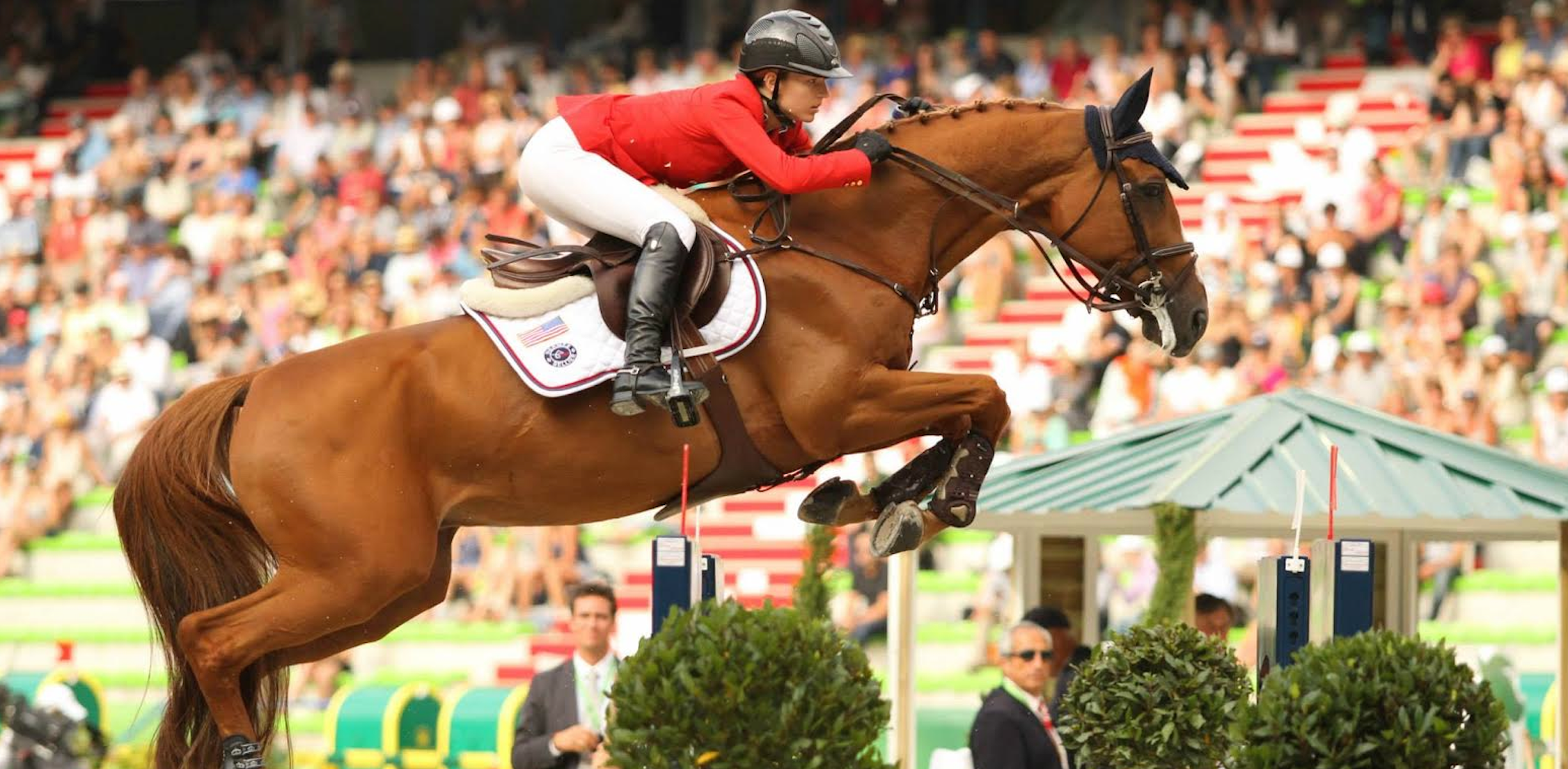Lucy Davis ‘15 has reached the height of international equestrian competition. Davis is among the 10 Americans selected to participate in the trials for the 2016 U.S. Olympic show jumping team, of which five will make the cut for Rio. Although fellow team members Beezie Madden, McLain Ward and Kent Farrington are almost universally considered locks for Rio, Davis still has a strong chance at claiming one of the final two Olympic spots.
But Davis’ achievements extend beyond the equestrian arena. Davis studied full-time at Stanford and majored in architecture while also riding professionally since her freshman year on The Farm. In 2012, she began competing with the horse she currently rides in competitions, Barron. That same year, Davis and Barron broke out onto the world stage with a first-place finish at the 2013 Grand Prix in Lausanne, Switzerland. The Daily spoke with Davis as part of its Road to Rio Olympic coverage about Barron, her training regime for Rio and what it was like balancing it all when she was still a student at Stanford.
The Stanford Daily (TSD): Can you talk about making the shortlist for the Olympics? What has the qualifying process been like?
Lucy Davis (LD): Two years ago, at the World Championships in Normandy, I was on the [U.S.] team and we got bronze. That’s when I realized that my essentially lifelong dream and goal of going to the Olympics could be a possibility. Since then, I have been focusing to peak, ideally, at the right time.
TSD: You participated in the Olympic trials in 2012 for the London Olympics as well, right?
LD: Yes. I was 10th, so I was still considered in the top 10. [The top five qualifiers went on to compete in London.] Four years ago, I had a different horse. He was extremely talented and had a huge heart, but the horse I have now is a once-in-a-lifetime horse, as they say. I would say it’s my best shot this year [to be among the final top five qualifiers for the U.S. team].
TSD: What’s your new horse, Barron, like?
LD: He has a very particular personality. We have to work together to compromise a lot. Other sports in the Olympics are just individual or team, but to be working with an animal that’s so unpredictable is a challenge — but it’s also super rewarding.
In the competition arena, he’s mostly business, which is lucky. At home, he can be a bit of a punk, I would say. He will very easily spin you off. He’s just got a lot of little idiosyncrasies. Basically, we have to have earplugs in him at all times, because any odd noise and he’s gone.
TSD: What is a typical day of training for you like, now that you are riding full-time?
LD: I’m based in northern Germany. I’m at the stable around 7:30 or 8 a.m. every morning. I ride usually around six horses, until about noon. After lunch, I usually do some sort of physical training. I like running and weights. I do a lot of yoga too, because the pounding on your back can get pretty rough.
Another thing that’s pretty unique about our sport is that it’s coed. Being a small girl, depending on the horse, can be an advantage. But I’m physically not as strong as some 6-foot dude, so I have to supplement a lot more with my fitness.
TSD: How does training full-time compare to what you did while at Stanford?
LD: At Stanford, it was a lot more hectic and a lot less sleep. But I’m lucky — because of Stanford, I was able to maintain almost the same schedule. The Red Barn is so close on campus. Most of my friends don’t go to university, because it takes time and energy away from their riding.
With the Red Barn, I was able to ride every morning. I usually rode three or four horses, then I would go to class. In the afternoons I could go to the gym or run around campus with friends. And you know, social life is easy because it’s all there [on campus]. Stanford basically let me do it all, which is why I miss it so much. Don’t ever leave!
TSD: What was it like to major in architecture at Stanford?
LD: It’s within civil and environmental engineering. It’s an awesome major. It wasn’t ideal for the traveling, because you can’t really bring your models on Delta. I tried to arrange my schedule so I could take studio classes when I wasn’t traveling as much.
TSD: An engineering major? That’s pretty intense.
LD: Yeah, it was intense. But it balanced a lot of my interests. I got to do creative design, art history and a lot of math and science as well. I got to take a lot of [environmental engineering] sustainability courses.
TSD: In hindsight, did you get anything out of your time at Stanford that you weren’t necessarily expecting?
LD: I’ve been riding my whole life and balancing it with school. In high school, I was basically M.I.A. most weekends for competitions. What I was not expecting from Stanford was, like I said earlier, to really be able to do it all.
A lot of young riders ask me about my experience. I always, weirdly, did better when I had everything going on. When I was able to go to classes, ride, hang out with friends, I felt more balanced and I always seemed to perform really well in my riding.
Contact Alexa Corse at corsea ‘at’ stanford.edu.
